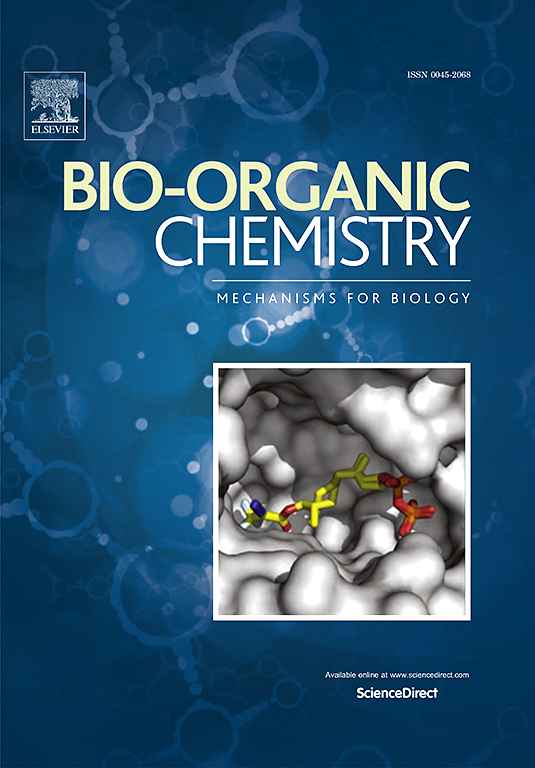“From darkness to radiance”: Light-induced type I and II ROS-mediated apoptosis for anticancer effects of dansylpiperazine-bearing squaraine dyes
IF 4.5
2区 医学
Q1 BIOCHEMISTRY & MOLECULAR BIOLOGY
引用次数: 0
Abstract
Photodynamic therapy relies on the generation of cytotoxic effects triggered by the irradiation of a photosensitizer molecule, resulting in the production of reactive oxygen species at concentrations exceeding physiological levels. In this context, squaraine dyes, a prominent family of second-generation photosensitizers, have gained increasing attention for their remarkable properties, with their photobiological characteristics recently emerging as a key focus of in-depth research. Dansylpiperazine-bearing squaraine dyes exhibited strong absorption in the red visible spectral region, excellent photostability, and a predicted ability to interact with human serum albumin, potentially serving as a transport vehicle to target sites. Benzothiazole derivatives excelled in photodynamic activity, demonstrating 7- to 11-fold increased cytotoxicity upon irradiation against prostate adenocarcinoma PC-3 cells and tumor selectivity indices exceeding 10 when compared to normal NHDF cells. In contrast, the introduction of the dansylpiperazino group in indole-derived compounds unexpectedly declined their photodynamic activity. Concerning benzothiazole-based ones, multiple reactive oxygen species were shown to contribute to the photodynamic effects, with singlet oxygen playing a key role. Squaraine internalization was observed in various cytoplasmic organelles, including mitochondria, endoplasmic reticulum, and lysosomes, without clear evidence of preferential localization to any single organelle. Non-genotoxic in the dark, the squaraines induced cell death by apoptosis upon light activation, as evidenced by significant DNA fragmentation and increased caspase 3/7 activation, particularly for the dye with N-ethyl chains, at concentrations below 1.0 μM, underscoring their potency. Checkpoint arrests in G1 and G2/mitosis were observed for non-irradiated and irradiated conditions, respectively, highlighting the antiproliferative effects of these squaraine dyes.

求助全文
约1分钟内获得全文
求助全文
来源期刊

Bioorganic Chemistry
生物-生化与分子生物学
CiteScore
9.70
自引率
3.90%
发文量
679
审稿时长
31 days
期刊介绍:
Bioorganic Chemistry publishes research that addresses biological questions at the molecular level, using organic chemistry and principles of physical organic chemistry. The scope of the journal covers a range of topics at the organic chemistry-biology interface, including: enzyme catalysis, biotransformation and enzyme inhibition; nucleic acids chemistry; medicinal chemistry; natural product chemistry, natural product synthesis and natural product biosynthesis; antimicrobial agents; lipid and peptide chemistry; biophysical chemistry; biological probes; bio-orthogonal chemistry and biomimetic chemistry.
For manuscripts dealing with synthetic bioactive compounds, the Journal requires that the molecular target of the compounds described must be known, and must be demonstrated experimentally in the manuscript. For studies involving natural products, if the molecular target is unknown, some data beyond simple cell-based toxicity studies to provide insight into the mechanism of action is required. Studies supported by molecular docking are welcome, but must be supported by experimental data. The Journal does not consider manuscripts that are purely theoretical or computational in nature.
The Journal publishes regular articles, short communications and reviews. Reviews are normally invited by Editors or Editorial Board members. Authors of unsolicited reviews should first contact an Editor or Editorial Board member to determine whether the proposed article is within the scope of the Journal.
 求助内容:
求助内容: 应助结果提醒方式:
应助结果提醒方式:


